
1 x fat quarter for your binding

Now it’s time to cut out the bag flap. Take a larger piece of fabric – I used a piece that measured 9″ x 10″ – and cut it in half so that you have two pieces that measure around 9″ x 5″. Round the corners as pictured below.
Place the two pieces together, right sides facing, and sew them with a 1/2cm seam allowance, leaving the top open. Make the same incisions around the corners that you did on your bag straps – as pictured below.
Pin the flap onto your backing so that it covers both straps. Sew along the edge with a 1/2cm allowance, leaving the edges raw.
Place this to the side, as you will now be making your binding. I cut four 2″ strips from a fat quarter, so they were around 2″ x 22″. If you have never made binding before (this is not bias binding, which is cut on a diagonal across your fabric), it takes just a few simple steps. Firstly, iron your pieces in half, longways. Then open your fabric out, pull the edges back in so that they meet the middle (as pictured below), and iron again.
I was recently shown a neat trick for using binding, which help me immensely (I’m notoriously untidy when using binding). It does make for a little extra sewing, but well worth it (and saves you from unpicking later). Open out your binding again, and place the right side edge to edge against your backing. You will be pinning three pieces of fabric together now. The front of your playmat will be placed wrong side to wrong side against your backing.
Pin your binding, opened out, all the way down along the edge of your two pieces, as pictured below. Sew close to the edge, ensuring that you are collecting all three pieces of fabric in your seam.
Now flip your mat over and fold your binding so that it encloses the edges of your mat (there’s a little yellow arrow showing you where to fold, in case this is not completely obvious already). Now you can topstitch your binding, resting assured that you have collected all your pieces together!
When it comes to corners, I’m no expert, but this is what I do. I tuck one corner of the first piece of binding (already sewn on) into the second piece of binding before I have sewn that piece. When I sew the second piece of binding on, I make sure I only sew as far as the seam on the first side – around about where that blue pin is in the photo below.
I then fold the corners of the binding, tucking excess fabric underneath the binding, and creating a diagonal line reaching from the outside corner to the inside corner of the quilt.
Pin into place, and then topstitch.
When it comes to the pocket, it’s really up to you how large you want it. My piece of pocket fabric measured 10″ x 7″. First do a single fold hem on the top edge of the pocket.
Next pin your pocket to the top left hand quarter of your mat (as pictured below), making sure to leave room for the top flap and the button. Top stitch the sides and the base.
For the next (and final stage) you will need to fold your bag in half and in half again – so that it looks like this:
Making sure the button is undone, you will then take the top left hand corner, and add basic snaps to attach all four corners. You will use three sets of snaps to attach the four corners of fabric.
The final set of snaps will be used to attach the bottom left hand corners, as pictured.
And then you’re done!

One fold and go child’s play mat. Perfect for playing with farm or zoo animals, or you could create roads and parking lots for playing with toy cars. This sweet little mat can then be folded into a backpack, with the toys stored in their own little pocket, and your little one can carry their own entertainment system to your next destination. These would make perfect Christmas or birthday gifts for a little one.
Stella Rutherford
{verydarkhorse.blogspot.com}




















































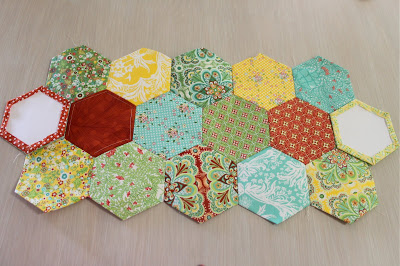






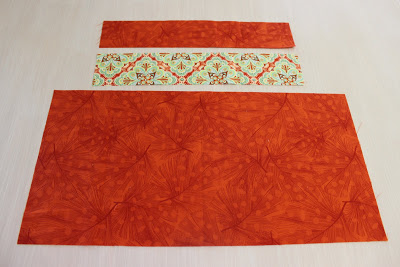


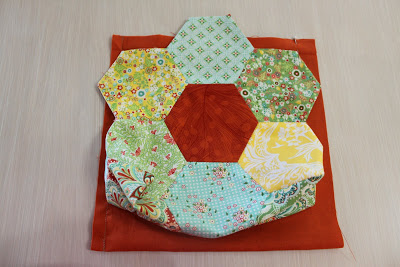














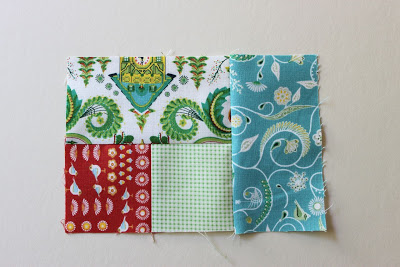



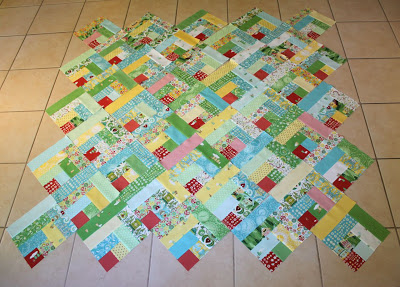


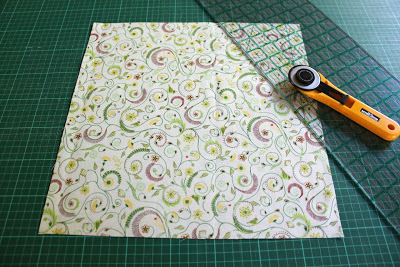





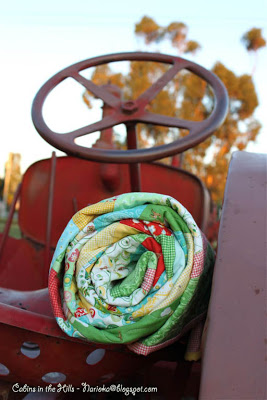























































































































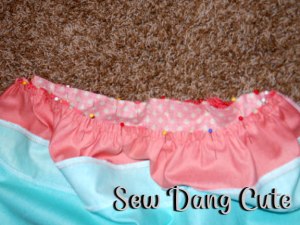




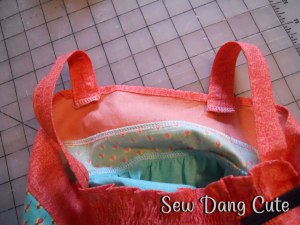






















 Remember the hole we left open in the middle square of the bag? Pull the entire bag out through that hole and arrange one bag inside the other.
Remember the hole we left open in the middle square of the bag? Pull the entire bag out through that hole and arrange one bag inside the other.


















